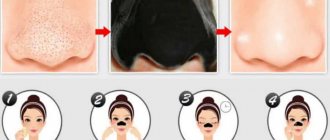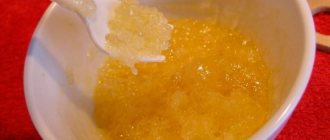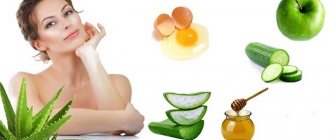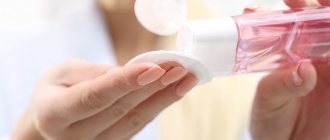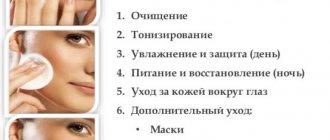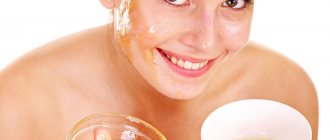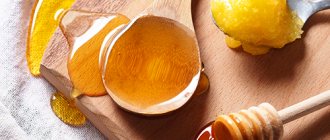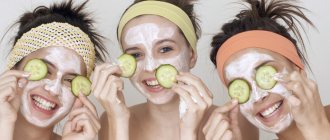Every woman who wants to get a healthy, beautiful face as a result, and not skin with irritation, allergies, acne, peeling or age spots, should know how to properly apply a mask to the face Take advantage of our tips on the correct use of masks to ensure healthy and youthful skin after home care.
How to prepare your face for applying a mask
Choose a high quality face mask
Buy a mask from a reputable skin care or makeup brand. Look for charcoal masks that contain activated charcoal, soothing agents (like aloe vera) and essential oils that can soothe the skin.
Check your skin for reaction.
Whether you mix a mask or buy a mask mixture, check your skin for allergic reactions or irritation before applying it to your face. Apply a small amount of mask to your cheek or the underside of your wrist. Wait 10 minutes and check for signs of irritation.
- Signs of an allergy or irritation include redness, swelling, hives, or itching.
If necessary, tie your hair back.
If you're concerned about your hair falling into your face while you're wearing a mask, use a hair tie to pull it back. This will prevent your hair from sticking to the mask.
Open up your pores.
The easiest way to do this is to take a hot shower before applying the mask.
- Alternatively, you can take a towel and dip it in hot water (as hot as your face can handle) and cover your face with the towel until it cools down.
- The third option is to hold your face over a bowl of boiling water for 1-2 minutes.
Cleanse and exfoliate your face before using the mask.
Use your favorite gentle cleanser to wash your skin. Washing your face removes dirt and oil from your skin to prepare it for the mask. In order to open up your pores, you should also apply a mild scrub and rinse before you apply the mask.
Take a brush
Face masks are best applied with a soft-bristled brush, such as a paint brush (commonly used for creating artwork) or a coloring brush (commonly used for applying hair dye). Invest in a brush that you will use for this purpose, and be sure to clean it when you're done.
- You will also need a bowl for your mask, and possibly a washcloth.
Cool down the mask
Keep the mask in the refrigerator until you are ready to use it. This is especially true if you use perishable ingredients in your mask, but even if you use a store-bought mask product, applying it cold can feel great.
- For a cooling effect, place the face mask in the refrigerator at least one hour before applying.
Rules and tricks for all types of masks
It would seem like a big deal to just apply a mask! But this process has many nuances on which the effectiveness of the procedure depends. So, let's look at the general rules of how to properly apply face masks at home and increase the effectiveness of the procedure.
Rule #1 is to thoroughly cleanse your skin. It is strictly forbidden to apply the mask to uncleansed skin. This will only clog your pores, even if there is no makeup on your face (dirt, sebum, etc. still accumulate on its surface). You need to at least wipe your skin with tonic, and even better, wash your face with foam. A scrub will also be very effective - but at least an hour before the procedure.
Rule #2 – Give a quick massage. This manipulation will improve blood microcirculation and prepare the skin and pores for the action of the active components of the mask. Before the massage, you should wash your hands thoroughly. And with careful, soft movements, move along the massage lines - from the chin to the cheekbones, from the eyebrows to the hairline and along the wings of the nose (from top to bottom).
Rule No. 3 – rinse off the composition correctly. Rinse off the product with lukewarm water without stretching the surface of the skin. Movements should be soft and careful.
Rule # 4 – Seal the components to the skin. The effect of the mask must be secured with cream. Immediately after the procedure, apply cream according to your skin type.
Note! If you like to experiment with new masks, do not be lazy to test for allergies - applying the product to your wrist or elbow. It is advisable to do this at least a couple of hours before the procedure, and even better – the day before. You should not experience any irritation or redness of your skin.
Now let's move on to the most popular types of masks in modern cosmetology. Below you will find step-by-step instructions with photos for each type of mask.
Interesting: Face masks with olive oil
How to properly apply a clay mask to your face: step-by-step video and photos
Scoop up some clay
Use your middle and ring fingers to scoop up some clay. Start with a small amount, about the size of a dime. If you want to apply a thick layer of cosmetic mud, you can scoop out a larger amount.
- Remember that it is easier to add cosmetic clay to your face later than to remove excess.
Spread the clay all over your face
Place the mask on the apples of your cheeks and gently spread it around your cheeks, forehead, temples, chin and nose. You can apply a thin layer if you want a quick mud mask that is easy to remove.
- If you apply a thick, opaque layer of cosmetic clay, you will be able to keep it on your skin longer since it won't dry out your skin's complexion as quickly.
Avoid applying the mask to the eye area.
While you can cover your entire face with a mask, you should avoid using cosmetic clay around your eyes. The skin around your eye is delicate, and if you apply clay to this area, you risk getting it into your eye, especially when removing the mask. Stand in front of a mirror when you apply the mask so that you can easily avoid the eye area.
- You should make sure to cover any blemishes or acne-prone areas of your skin.
Wait 15 minutes.
Once you have applied the clay mask, leave it on for 15 minutes or until the mud begins to dry.
Wash off the mask.
Take a clean cotton cloth and soak it in warm water. Squeeze it out completely and gently rub into the mud mask. Continue to rinse and wring out the fabric between washing the mask.
- Be gentle when you remove the mask. Rubbing your skin roughly can damage your delicate skin.
- If you have trouble removing the mask, soak a cloth in hot water and place it on your face for about 30 seconds. Then use a cloth to dry the mask.
Rinse your face.
Once most of the mask has been cleaned, pour warm water over your face. This will help remove any remaining clay mask.
- Avoid using hot or cold water. They can shock your skin or dry it out excessively.
Toning the skin after the mask
If you have oily skin, after a vitamin face mask, you should apply a toner, not a cream, to your skin. Such cosmetics will help quickly soothe the skin, making it more firm and elastic. You can use a tonic with cucumber extract, medicinal chamomile, containing salicylic acid. After applying the mask, are there any small wounds or damage on your skin? Then avoid any tonic containing alcohol.
After the mask you need to tone the skin
A ready-made tonic suitable for your skin type can be easily bought in a store and is not expensive. If you prefer homemade natural cosmetics, use the following recipes.
- Prepare a decoction of sage or chamomile. Cool and strain the liquid. Mix 0.5 l. alcohol with 1 tsp. decoction Let the product sit for a week. Use as a skin toner.
- 1 tbsp. Dried calendula pour 200 ml. boiling water Let it brew for 1 hour. Wipe the skin with the finished strained liquid. You need to store homemade tonic in the refrigerator for no more than 1.5 days.
How to properly apply a sheet mask to your face
Soak the compressed paper in liquid
Suitable liquid includes milk, egg, syrup or any other facial product. Leave until the soaked paper swells.
- Another nice alternative is to soak the mask paper in the toner or floral water of your choice.
Unwrap the wet mask
Apply to face and leave on for 10~15 minutes until facial product is completely absorbed.
- You can place the clay on top of a sheet mask for better results.
Massage the remaining liquid into your face.
The essence is great for your skin, so resist the urge to scrub, wipe or wash it off your face. Instead, use your fingers to blot away the serum that remains after applying the sheet mask.
Lock everything inside by applying moisturizer.
Once most of the serum has been absorbed into your skin, squirt a little of your favorite oil-based moisturizer into the palm of your hand, then massage it into your face. This will act as a seal on your face that locks the serum into your skin.
- Moisturize your skin with a serum if you have wrinkles, dullness, or dark spots.
- Use cream or ointment if your skin is dry.
- Try using an oil-based moisturizer if you have sensitive skin.
- If you are not sure what moisturizer to use, use a non-comedogenic lotion
Choosing the right lotion
Do I need to apply cream or lotion after the mask? Cosmetologists recommend using both products. The main thing is to pay attention to the composition of the lotion. This cosmetics is ideal for people with oily or combination skin. If you have dry epidermis, you should avoid using lotion.
Skin care after the mask
Immediately after you have washed off the mask, you should thoroughly wipe your skin with cucumber lotion or a product containing chamomile extract. Products containing zinc or salicylic acid are also very popular today. For oily skin, such a lotion will be a real salvation, because it will rid the face of excess shine and reduce the activity of subcutaneous fat production. Women with dry skin should prefer hypoallergenic lotions that do not affect the natural pH balance.
How to properly apply a film mask to your face
Bring some water to a boil in a saucepan.
Fill a large saucepan with 1 to 2 cups (237 ml to 473 ml) of water and place it on the stove. Turn the heat up to high and allow the water to come to a full boil, which should take about 5 to 10 minutes.
- If you prefer, you can boil water in a kettle.
Pour water into a bowl and add essential oils
As soon as the water boils, remove it from the stove. Carefully pour the water into a large bowl and mix with the essential oils of your choice. Let the water sit with the oils for a minute or so.
- For dry or mature skin, add rose and/or jasmine essential oils to water to soften skin.
- For acne-prone skin, add tea tree and/or rosemary oil to water for their antibacterial properties.
- For combination skin, add grapefruit oil to water to help balance your skin.
- For sensitive skin, add geranium and/or lavender oil to water to help soothe your skin.
- You can also add eucalyptus oil to water if you have problems with allergies or colds.
Cover your head with a towel and hold your face over the bowl.
Once the water and oil have soaked for a few minutes, place a large towel over your head. Move your head over the bowl so that your face is approximately 5-10 inches (13-25 cm) from the steam.
- Make sure the towel covers your head and the area around the bowl so the steam is captured and focused on your face.
- Be careful not to move your face too close to the steam or you may burn your skin.
Hover your face in between.
Hold your face over the steam for 90 seconds to 2 minutes. Take a 1-2 minute break and then return your face to the steam.
- If you find that your skin becomes too hot or begins to feel like it is burning, stop steaming your face immediately.
Apply a gentle scrub.
Once your face is clean, take a small amount of a gentle facial scrub and massage it into your face. Rub it into the skin in upward circular motions for 30 seconds to 1 minute, paying particular attention to areas where the skin is particularly rough, dry, or prone to clogged pores.
- Choose a facial scrub that contains delicate microbial heads rather than crushed fruit or nut shells. It will be less likely to irritate your skin.
- If you have oily or acne-prone skin, you can exfoliate two to three times a week.
- If you have normal or combination skin, you can exfoliate up to twice a week.
- If you have dry or sensitive skin, you shouldn't exfoliate more than once a week.
Choose a mask that suits your skin type.
Just like with your facial cleanser, it's important to choose a face mask that suits your skin type. You can choose from clay, gel, cream and sheet masks that remove excess oil, treat acne, hydrate, brighten and soothe the skin.
- Clay masks are best for oily and acne-prone skin because they absorb excess oil and deeply cleanse pores. They can also tighten enlarged pores.
- Moisturizing cream masks are best for dry, dehydrated or mature skin. They usually contain oils that add moisture to the skin.
- Gel masks are good for most skin types, including sensitive skin. They are usually oil-free but can still hydrate and soothe the skin.
- Sheet masks are thin sheet or paper masks that are infused with liquid ingredients that treat a variety of skin problems. You can find formulas that moisturize, exfoliate, and brighten.
Smooth the mask onto your face and let it dry.
Once you have chosen a mask, gently apply it to your face with clean fingers. You can also extend it to your neck and décolleté if you wish. Let it dry according to the instructions on the package. In most cases, you will need to leave the mask on for 10-20 minutes.
- If you are using a film mask, remove it from the packaging and place it on your face. Press it gently to make sure it sticks to your skin. To prevent it from falling, it is best to lie down when you wear it.
Rinse off the mask with water and pat dry.
When the mask is dry, splash warm water on your face to remove it. Use a clean towel to dry your face.
- Refer to the mask packaging to ensure you use the proper procedure to remove the mask.
- If you are using a sheet mask, there is no need to rinse it off.
Apply your regular moisturizer.
After you remove the mask, rinse your face with cool water and dry your face again. Apply your moisturizer to your face.
- You can use toner before applying moisturizer if you wish.
Alginate masks
An alginate mask has long become a must-have not only for home care, but also for salon care! It is made from brown algae - thanks to their astringent properties, the product hardens on the face, but does not dry out (like clay masks). The mask retains moisture, nourishes the skin with vitamins and valuable microelements.
How to use an alginate mask:
- Cleanse the epidermis of impurities.
- Treat your skin with toner or toner. It is also advisable to apply a nourishing serum to your face - just a few minutes before applying the mask.
- Now you can prepare the mask. This must be done quickly so that the composition does not have time to harden in the bowl. Strictly observing the proportions, combine the powder from the bag and plain water (most often in a ratio of 1:3). Mix with quick movements until smooth.
- Immediately apply the mask to your face, working from bottom to top. The composition must be distributed in a thick layer. It is very convenient to use a spatula. The product can also be applied to tightly closed lips, eyes and neck (don’t worry, the mask is very easy to remove - if you have followed all the proportions).
- For the time indicated on the package, it is advisable to relax and unwind.
- Hook the edge of the mask near your jawline and remove it in one motion. There is no need to wash your face.
Rating of the best face masks
Beauty injection mask with lifting effect Organic Shop mask Organic Kitchen
Like a magical injection of beauty, the lifting mask transforms your skin, increases firmness and elasticity, smoothes out fine wrinkles, and makes the facial contour more correct and clear. A fresh apple tightens and tones the skin, giving it freshness and a healthy appearance. Organic rooibos moisturizes and softens the skin, saturates it with amino acids, making it denser and more elastic. Directions for use: Apply the mask to cleansed facial skin, avoiding the area around the eyes, leave for 8-10 minutes, rinse with warm water.
Elizavecca Milky Piggy Korean Bubble Clay Mask
Infusions of lavender, chamomile and mint, rosemary deeply cleanse and remove excess sebum. Additionally stimulates skin cell renewal, evens out skin microtexture and skin tone. Improves blood circulation, increases skin elasticity and firmness.
Directions for use: Apply the mask to the face, avoiding the eye and lip area. Leave for 4-5 minutes, then do a light massage and rinse with warm water.
Softening fabric face mask BioAqua
Animal Face Panda BioAqua mask with softening components is an assistant for the care of problematic skin prone to inflammation and irritation, dermatitis and eczema. Blackberry extract, which is part of the product, has a refreshing, softening, healing, astringent and anti-inflammatory effect. Helps restore facial skin health and freshness.
The mask provides good results from the very first use: redness goes away, irritations fade and calm down, the skin becomes fresh and soft, as if glowing from the inside. Blackberries promote rapid healing of wounds, inflammation and other skin damage.
Since when using fabric masks, the skin absorbs nutrients without residue, and they are not destroyed in the process, the effectiveness of such procedures increases, and the duration of the effect from their use is comparable to hardware procedures in a cosmetology salon.
The mask also includes a whole complex of natural plant extracts that have a beneficial effect on the skin. Yellow lotus extract cleanses and eliminates age spots and spots. Ginger and licorice extracts have anti-inflammatory and antimicrobial effects.
Korean face mask from seaweed seeds BioAqua
A face mask made from algae seeds contains collagen, vitamins, amino acids, and other nutritional components. All this is stored in kelp seeds, the mask is 100% made from them. It is a dry bulk mixture that needs to be diluted with water. When interacting with liquid, it forms a plastic mass. Seaweed seeds have a regenerating effect on the skin. They remove dead cells, resulting in an improved complexion. The mask evens out and tightens, saturates with vitamins C and A. The mask improves complexion and skin turgor even after one use. Especially recommended for aging, flabby, tired skin. Thanks to the active substances in the composition, the product stimulates blood flow in tissues and promotes the restoration of damaged cells. Improves the structure of the dermis, makes wrinkles less noticeable, and slows down the aging process. In addition to the main effect - nutrition and regeneration - the mask cleanses pores, dissolving comedones and drawing out their contents. It has a therapeutic effect, promotes acne healing, and is recommended for acne. Suitable for any skin type. It will nourish dry skin with moisture, and cleanse oily skin from sebum deposits in the pores. The product lightens pigmented areas and freckles, evens out skin color, whitens, soothes redness and irritation. Use the mask only on the skin of the face, avoid getting the product on the lower and upper eyelids and, especially, in the eyes.
Alginate mask Inoface
Alginate masks Inoface Modeling Cup Pack based on alginate acid with various extracts have a healing effect. You can choose a modeling mask specifically for your skin type: with charcoal, tea tree, collagen, acerola or mint. All alginate masks act effectively and carefully, nourishing, moisturizing, renewing and strengthening the epidermis. They also all activate collagen production, remove harmful substances from cells, relieve irritation, tighten and smooth the skin.
LiveInternetLiveInternet
A face mask is an effective product for high-quality facial skin care; with its help, you can quickly restore the tone, elasticity and healthy glow of the skin.
But do not forget about some rules, neglecting which all efforts may simply not give the desired effect and even cause harm in the form of allergic reactions.
Traditional medicine is especially rich in recipes for effective and healthy masks for the face and body. Proper use of natural products is the key to long youth and healthy skin.
So, let's look at how to properly apply a face mask prepared at home, including such aspects as preparing it and washing it off, as well as preparing the skin of the face.
Skin preparation:
Remember, applying a mask to the face should only occur after complete cleansing of the skin! (see Stages of skin cleansing
). This means that you cannot apply the mask to a face that has decorative cosmetics (foundation, powder, blush, etc.), as well as to skin that is lubricated with any cream, because it can prevent the beneficial substances of the mask from penetrating into the deeper layers of the skin.
Even if the mask you choose is intended specifically for deep cleansing of the skin or is characterized as a peeling mask, it can only be applied by washing with a special gel or wiping the skin with cosmetic milk.
To cleanse the skin, use the usual products that you use daily for this purpose (milk, lotions, tonics suitable for a specific skin type; washing your face with various foams and gels, or with soap). For dry facial skin, if there is no decorative cosmetics on it, it is enough to simply wash your face thoroughly with warm water.
Then it is advisable to make a steam bath or facial compress with chamomile, sage or linden herbs. This procedure will open the skin pores and remove remaining dirt, preparing the face for more active penetration of nutrients into the deeper layers of the skin.
Also, after cleansing the skin, if necessary, you can do a facial peel.
(see
Super peeling or “Hollywood cleansing” at home
), using exfoliating scrubs.
Preparation of the mask:
To prepare the mask, you will first need some small bowl (it is preferable to use glass or porcelain dishes), and spoons (tea and tablespoon) in order to measure the proportions and, of course, stir the composition.
Also, in some cases, you may need things like a wooden masher (for mashing fruits, berries and vegetables), a juicer, a coffee grinder, and a mixer.
The most important thing in making masks is to use only fresh homemade products! And applying the mask to the face should occur immediately after preparing it. Almost all natural masks are used only once, and are never stored until the next use.
Applying the mask:
The next step is to test the composition of the mask for an allergic reaction of the body. To do this, apply a little product to a small area of skin and wait a while. If there is no reaction (in the form of a rash, redness or itching), then you can apply the mask to your face
So, after you have cleansed your skin and prepared the mask, you need to apply it to your face (or to certain areas of the skin, depending on how the recipe states). This can be done simply with your hands (liquid and oily masks), a sponge sponge (creamy masks), a brush, a cotton swab, or using brushes and spatulas specially designed for this purpose (very thick masks), which can be purchased at cosmetic stores. All this must, of course, be immaculately clean. Using special devices for applying masks, you can make the procedures in your personal home beauty salon more accurate and speed up the preparation for them.
By the way, the most suitable place for this is the bathroom, where there is no fear of getting anything dirty while applying the mask, and warm air enhances the effect of the product you have chosen. Just don't have a steam room. Intense heat does not promote the absorption of nutrients, but helps remove toxins, so steamed skin is ideal for face and body scrubs or, in extreme cases, deep cleansing masks.
The mask should be applied from the bottom up, along massage lines, starting from the chin (and if necessary, the neck) and ending with the forehead.
Make sure that hair is completely removed from your face, then apply the mask, moving first from the chin to the earlobes, then from the corners of the lips to the middle of the auricle, then from the nose to the temples, and then from the middle of the forehead to the temples, and hair parts of the head.
The areas of skin around the eyes, lips, and thyroid gland on the neck should remain open—applying the mask to these areas is contraindicated (except when indicated in the prescription). Protect your eyes and the area around them with cotton pads, first soak them in tea leaves or just lukewarm clean boiled water.
Keep in mind that in order to get the most results, after applying the mask, it is best to lie down (or sit in a comfortable chair), close your eyes, and relax. It is advisable to even turn on some relaxing music. Just dream, breathe evenly.
It is highly undesirable to do anything, walk or talk with a mask on your face.
A few more points:
Some masks, especially those based on fruits and berries, tend to flow, so in order not to stain your hair and clothes, it is recommended to use special hair caps, for example, such as for a shower, and cover your shoulders and décolleté with a towel (one that will not It's a shame if it gets dirty). Also, if you lie down on the bed with the mask applied, it is advisable to lay something under you in the head and shoulder area to prevent the mask dripping from your face from getting on your bed linen. You need to keep the mask on your face exactly as long as indicated in the recipe. The duration of the procedure depends on the type and condition of the skin, as well as on the quality of the face mask. Typically this time ranges from 10 to 30 minutes. This applies to a greater extent to hardening mixtures, which turn into a film and do not allow open pores to breathe. The main sign that it is time to remove the mask is that it hardens and dries out. If suddenly the mask begins to tighten the skin very much, or you experience any other discomfort from it, it is better to wash it off immediately.
Removing the mask:
Proper application of face masks also requires proper removal. Experts recommend not to rush and if there are no more precise instructions in the mask recipe, follow the following procedure:
— Remove the mask with light movements, avoiding efforts that can stretch the skin. First, use a cotton cloth or cotton swab dipped in lukewarm water and moisten the masked areas using a blotting motion. If the mask has thoroughly dried out since application and has formed a kind of film, then do not try to wipe it off or “tear” it off your face, this may cause skin irritation. Wash off any remaining mask that could not be removed with a swab or cloth. — Masks are washed off, mostly with water alone, without using soap or other cleansers.
— For oilier skin types, it is better to wash with cool water; for dry skin, on the contrary, it is better to wash with warm water. The mask must be washed off very carefully.
— A special soft sponge can also be used for this purpose; you must first wet it and remove the mask from your face with it. After particles of the mixture are removed from the face, the skin should be wiped with a special lotion or rinsed with cold boiled water.
— At the end of the procedure, be sure to wipe your face with lotion and lubricate with a cream that matches your skin.
Contraindications for applying masks to the face
- The presence of irritation or pustular rashes on the skin.
- If there is excessive growth of facial hair and dilated skin vessels, the application of masks is contraindicated.
- Allergic reactions to mask components
- Multiple pigmented neoplasms on the facial skin
- A drying mask should never be applied to the neck!
And lastly:Regardless of what masks you choose for your skin, be it moisturizing or nourishing facial masks, after this procedure your face needs to rest. Try to avoid bright facial expressions, spend at least one hour in silence, be silent and dream about a wonderful transformation (how refreshed you became after applying the mask :o). Under no circumstances should you go outside immediately after a face mask and cream; here you should also wait at least 1.5 hours.
Masks are recommended to be used 1-2 times a week, alternating moisturizing compositions with nourishing masks.
If you use them more often, it can irritate the skin and even weaken it. But if you use them less often, then there will be no visible effect from them. naturalmask.ru, namewoman.ru
Now you know how to properly apply masks to your face, so I wish you good luck in mastering such an area as home cosmetology.
Always be beautiful!
Interesting on the topic:
Top 10 DIY anti-aging face creams
Facial skin care in adulthood
Effective anti-wrinkle masks
Negative skin reaction to the mask
In some cases, atypical reactions of the body to the composition of the chosen product are noted. If after application the skin begins to burn, sweating, shortness of breath, and discomfort appear, the mixture should be rinsed off with warm water and use a soothing cream. Depending on the severity of the reactions, you may need to visit a dermatologist or take antiallergic medications.
Redness on the face as an allergic reaction to a cosmetic product
Allergic reactions can manifest themselves in different ways. They usually include symptoms such as facial redness, burning sensation, discomfort and a feeling of tightness on the skin, and the appearance of a rash.
Burn
Too aggressive components in the composition can cause chemical burns and redness of the skin, further treatment of which must be entrusted to a specialist.
Such reactions are typical not only for people suffering from allergies, but also when using low-quality, falsified or expired cosmetics.
To avoid atypical manifestations of the body on the composition of a cosmetic mask, before the first use it is worth conducting a sensitivity test. To do this, the prepared or purchased composition is applied to the elbow or the back of the wrist, where the area that is sensitive to external influences is located. If after 10-15 minutes no negative changes have occurred on the skin (redness, itching, hives), the product can also be used on the face. Otherwise, the remaining product is removed with a dry cloth, and antihistamines must be taken. If severe negative symptoms occur, seek medical help. It should be noted that an allergic reaction can occur to any of the components of the drug, so even self-prepared home remedies are not a guarantee of safety.
Features of choosing masks
The compositions differ in their principle of action, are intended for different skin types, and differ in the effect they produce. Usually we are talking about nourishing, anti-aging whitening or moisturizing compositions, but there are also special types of cosmetics - masks. Try making a homemade chocolate mask using recipes from this material.
Winter masks
Designed for use in adverse weather conditions. Unlike most cosmetic products, they are used not at night, but in the morning before leaving the house. It is advisable to apply the appropriate composition within half an hour to an hour; the mask perfectly nourishes and moisturizes the skin, providing its protection.
Gommage
A special composition whose functions are to remove the top layer of dead cells and cleanse the dermis of impurities. Use on a pre-steamed face, except for sensitive areas around the eyes or lips. After application, it is necessary to wait for 5 - 10 minutes, during which the composition is converted into a light film. It must be carefully rolled with your fingers in the directions of the facial massage lines. For this unusual use, gommage is also called a mask - rolling.
Masks for use in the bath
Compositions for use in baths and saunas differ in two and even three-phase use. First of all, you need to steam your face well, after which a diaphoretic mixture is used. Preliminary cleaning and removal of dead epidermis will ensure maximum penetration of the nutritional composition. To summarize, we can distinguish three main stages of cosmetic procedures in the bath: steaming (providing a diaphoretic effect), exfoliation, nutrition.
Masks with aevit
Compositions with aevit (a complex with vitamins A and E) are often recommended for home preparation. The main advantages of such compositions are cleansing and rejuvenation of the dermis, restoring natural elasticity. For the base, you need to choose a composition that suits your skin type, to which you add a couple of vitamin capsules. You can improve the finished cream, as well as use exclusively natural products. The best masks at home are collected for you in the article.
The main condition is to prepare the composition immediately before use, without preparing the mixture for future use.
Thai masks
They became popular in our cosmetics market relatively recently. The main difference between such compositions is their naturalness and safety of use for different skin types. Good quality products have a short shelf life; similar formulations are often made based on Thai cosmetics. Find out about the effect of golden masks by following the link.
For pregnant
Cosmetics for expectant mothers should be chosen with extreme caution so as not to cause harm or cause an allergic reaction. The best choice would be a preliminary consultation with a cosmetologist, an individual approach to the needs of the skin during this period.
You should not overuse cosmetic procedures and use many different formulations. Such experiments are not always successful, so the choice of cosmetics for care should be done carefully.
How often can you use the mask?
One of the main advantages of such cosmetics is the quick effect. After the first application, the face becomes fresher and more well-groomed, so it is recommended to use this product regularly. This does not mean that the mixture must be applied at every opportunity, because this is fraught with additional problems.
Important points when using:
- Compliance with skin type, age, following the manufacturer’s recommendations for application and frequency of use.
- Use well combined with a relaxing facial massage. Rest and complete relaxation are also welcome, so you should lie down comfortably, relax your facial muscles, and detach yourself from everyday worries and problems.
- The mixture must be washed off with warm water. It is good to use decoctions of medicinal herbs or wipe your face with it after the procedure. This will help relieve swelling, remove circles under the eyes, and also helps to tone the dermis.
It is necessary to use such cosmetics in a course. Usually these are 5–10 procedures, after which it is advisable to take a break so that the effectiveness does not decrease. This occurs after the dermis is oversaturated with nutrients.
It is not difficult to avoid addiction; just change the product or not use the mixture for a month.
How many times a week can you do it and why should you not use it every day?
Typically, cosmetologists advise using such cosmetics no more than 1-2 times a week, so it is better to adhere to the rules indicated on the packaging of the purchased products.
Main risks with daily use:
- The dermis is quickly saturated with all nutrients, after which the rate of their absorption deteriorates.
- Excessive care can cause a backlash, lead to dermatitis or allergies, and deterioration of the dermis.
- Reduced effectiveness of the cosmetic product.
- Insufficient production of your own collagen and elastane in the future.
Such a statement does not mean that you should completely abandon the use of such means. Cosmetic masks are famous for their quick effect and are considered an excellent alternative to expensive professional procedures. The big advantage of such products is their ease of application and use.
When is it better to apply the mask: morning or evening
To ensure the desired result, it is worth studying the basic rules for using such cosmetics. It is advisable to apply the mask in the evening, but some mixtures have a more active effect in the first half of the day.
From what age can it be used?
“Acquaintance” with such cosmetics should begin no earlier than 20–25 years. Anti-aging formulations are used from the age of 25 or earlier when the first signs of skin aging appear.
How to prepare and cleanse your skin before applying a mask
An invariable condition for the effectiveness of cosmetic masks is good preparation of the surface of the face. Regardless of whether such a session is carried out in a beauty salon or at home, you should definitely pay attention to cleaning before applying such compositions.
How to prepare the dermis:
- All decorative cosmetics are removed.
- The surface is cleaned with milk or tonic.
- You can use a mild detergent.
- Before applying some types of mixtures, it is advisable to use a steam bath.
If you ignore preparation for applying the composition, the deeply penetrating components of the mask can deliver all the impurities and bacteria on the surface into the dermis. This will cause a negative reaction, leading to the spread of inflammation and rashes. To prevent this from happening, the face, hands, as well as all objects in contact with cosmetics must be disinfected.
